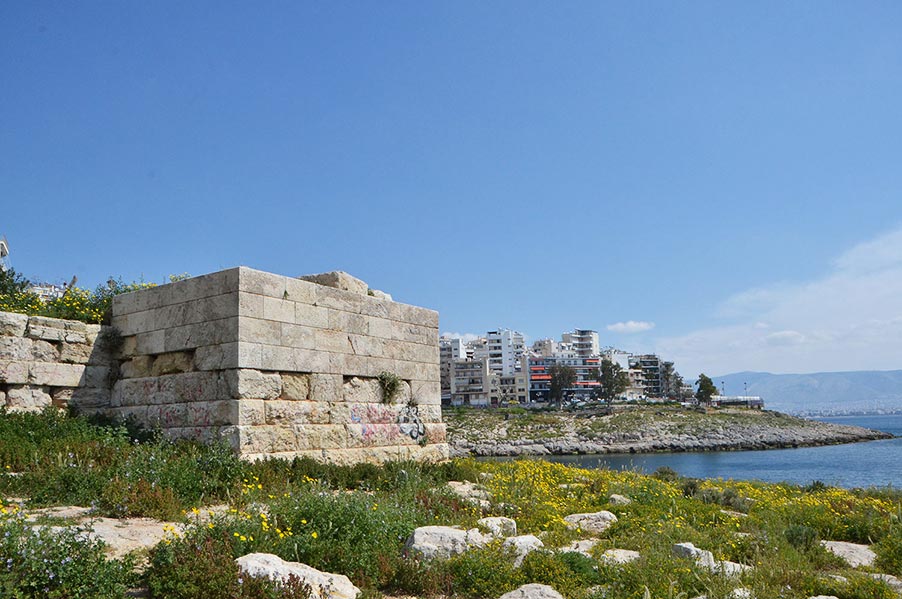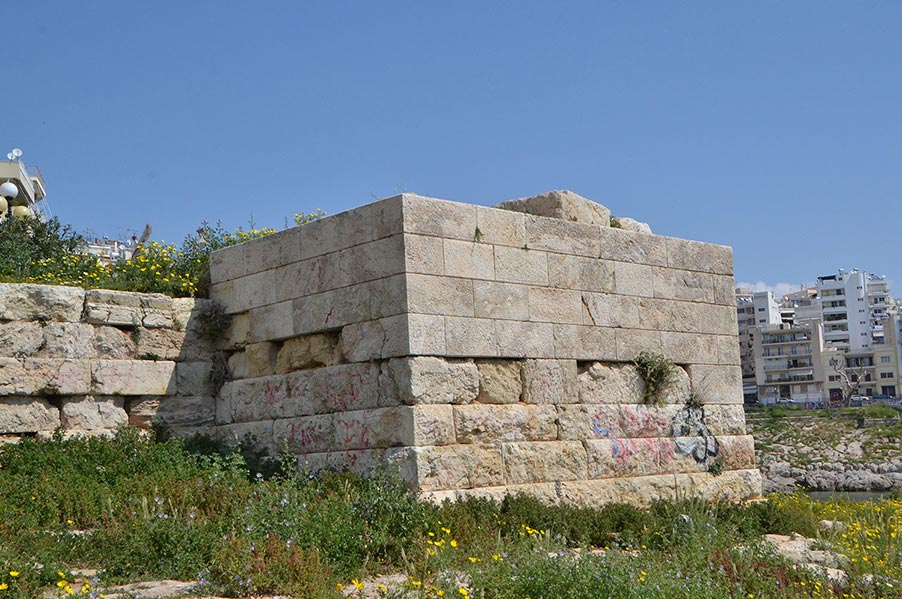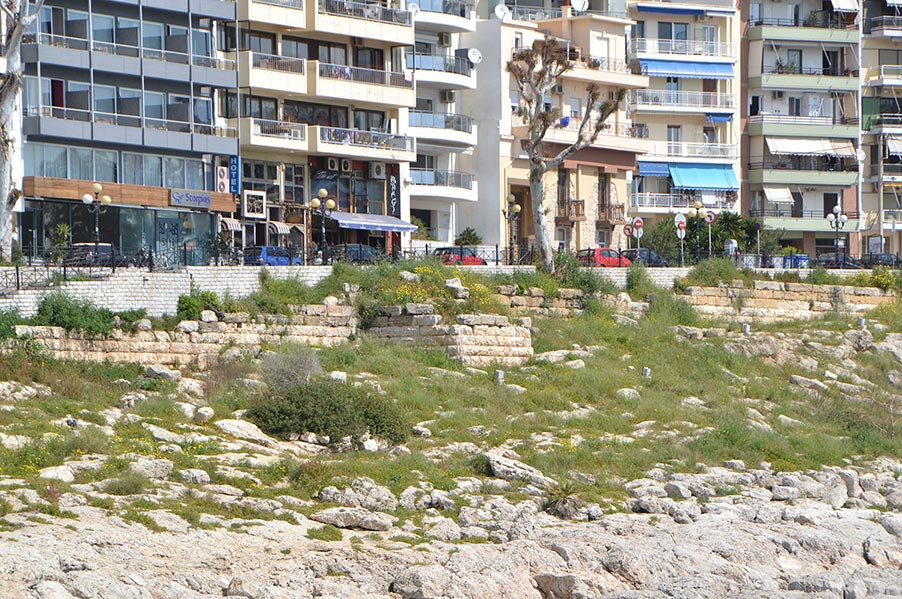- Home
- Piraeus
- Piraeus Entries
- Piraeus Long Walls
Description
The Long Walls
Piraeus was fortified from c. 493 BCE which according to Thucydides was a project instigated by Themistocles and not finished until 480 BCE. The Long Wall fortifications which connected Piraeus to Athens were begun in c. 465 BCE and completed in 446 BCE. The Northern Long Wall measured around 6 km in length and ran from the south west of Athens to the north east of Piraeus. The second wall ran to Phaleron and, therefore, blocked the land access to the port. In 446 BCE a Middle Wall was added which ran parallel to the North Wall creating a narrow protected corridor between the city and port and which provided invaluable farm land and living space in times of war when the wider region of Attica was under attack, as it was, for example, during the Peloponnesian War (431-404 BCE).
Piraeus Fortifications
The builders of the harbours of Piraeus always had defence in mind as Zea was deliberately set back so that the harbour entrance was exposed to attack from the flanking shores. There was also probably a fortification wall to block off any attack by land. In 429 BCE, during the Peloponnesian War, a raid by long-time rival Sparta led the Athenians to better fortify Piraeus. The entrances to the harbours were made smaller by the construction of fortified moles running into the sea on either side of the port. Further, towers and platforms for archers were also added to the moles and moveable chains were used to close off the entrances completely when needed. This did not, though, deter Sparta attacking Piraeus again in 404 BCE when the Peloponnesians destroyed parts of the Long Walls.
Piraeus & The Long Walls
Following Athens’ defeat in the Peloponnesian War in 404 BCE, Piraeus never quite regained her former glory. However, in 375 BCE the port could still accommodate 100 triremes and in the mid-4th century BCE the port once more expanded so that Zea could house 196 ships, Munichia 84 and Kantharos 94. During the Macedonian occupation from 322 to 229 BCE Piraeus and Athens became less important as a Mediterranean trade centre and the end finally came in 86 CE when the Roman general Sulla sacked Athens and destroyed the port.
Source: http://www.ancient.eu/Piraeus/


